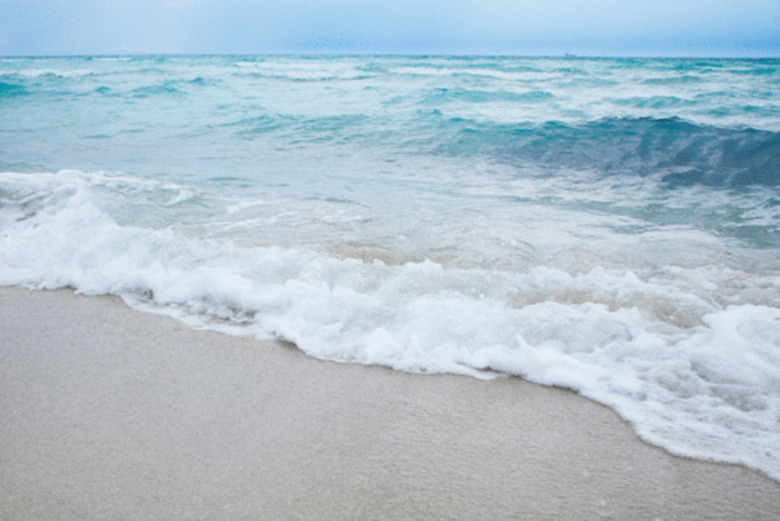What Kind Of Tides Occur When The Moon & Sun Are At Right Angles?
Amazing as it sounds, ocean tides on earth are directly caused by the gravitational pulls of the Moon and Sun. Tides are the daily raising and lowering of sea levels. The height of the tides at any location is determined partly by geography and weather conditions and partly by the relative positions of the sun and moon. A particular kind of tide occurs when the Sun and Moon form a right angle with the Earth
Lunar Gravity
Lunar Gravity
The greatest influence on Earth's tides is the moon's gravity. Contrary to popular belief, the Moon lacks the mass to actually attract the water vertically. Instead, its gravity pulls water horizontally across the ocean, creating a bulge that is noticeable as a high tide on coastlines. Opposite this high tide is another caused by the centrifugal motion of the earth-moon system. Between these two high tides are two depressions, or low tides. In a single day, most coastal locations will experience two high and two low tides.
Solar Gravity
Solar Gravity
The same principles that govern the lunar tides apply to the Sun as well. However, the Sun's greater distance from the Earth means that its influence on tides is far less than the Moon's. Still, the combination of lunar tides and solar tides means that as the Moon revolves around the Earth, tides change their intensity. The specific alignment of the Sun and the Moon with respect to the Earth dictates the kind of tide experienced on the coasts.
Spring Tides
Spring Tides
When the Sun, Moon and Earth are in a straight line, spring tides are the result. From the point of view of an earth-bound observer, these tides coincide with the new moon and full moon. Basically, spring tides are the overlap of the Moon and Sun's tidal forces. High tides are measurably higher, while low tides are lower. Interestingly, it makes no difference whether the Moon is new or full. Spring tides are exactly the same in either configuration.
Neap Tides
Neap Tides
Neap tides occur when the Moon and Sun form a right angle with the Earth. In contrast to spring tides, neap tides are the effect of tidal forces canceling each other. That doesn't mean that tides disappear completely. The lunar tide is much stronger than the solar tide, so even during neap tides, the ocean will raise and lower as always. However, high tides will be smaller, and low tides will not be as low.
Cite This Article
MLA
Patrick, Josh. "What Kind Of Tides Occur When The Moon & Sun Are At Right Angles?" sciencing.com, https://www.sciencing.com/kind-moon-sun-right-angles-8379649/. 24 April 2017.
APA
Patrick, Josh. (2017, April 24). What Kind Of Tides Occur When The Moon & Sun Are At Right Angles?. sciencing.com. Retrieved from https://www.sciencing.com/kind-moon-sun-right-angles-8379649/
Chicago
Patrick, Josh. What Kind Of Tides Occur When The Moon & Sun Are At Right Angles? last modified March 24, 2022. https://www.sciencing.com/kind-moon-sun-right-angles-8379649/
